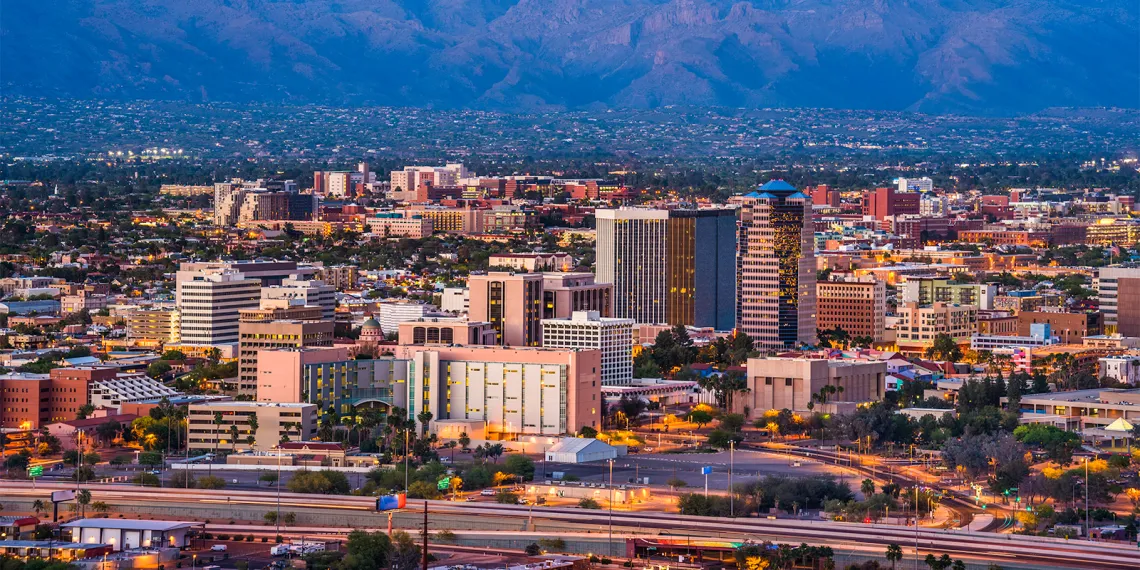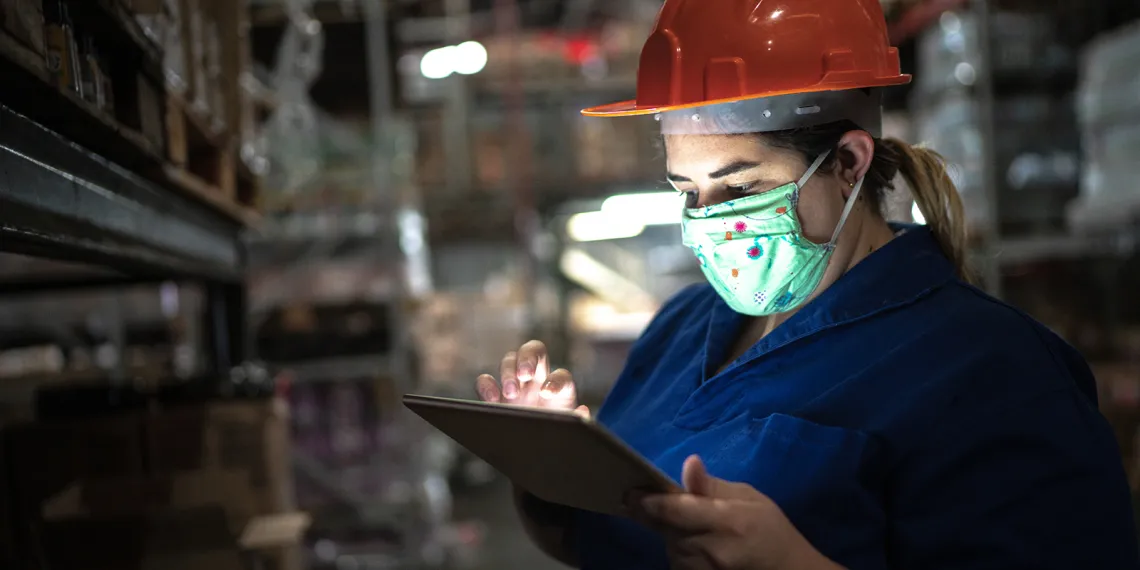As USMCA ratification is completed, and NAFTA is replaced, UArizona researchers provide insight into what this means for US-Mexico relations.
At the Mariposa Land Port of Entry in Nogales, Arizona, under steel canopies that provide relief from the harsh desert landscape, a poem etched on a wall, in both English and Spanish, is a message for border crossers. The poem, Border Lines, is written by Nogales, Arizona native and Arizona Poet Laureate Alberto Álvaro Ríos. It ends with the lines, Let us turn the map until we see clearly: / The border is what joins us, / Not what separates us.
Border economies along the U.S.-Mexico border—like Nogales, Arizona and Nogales, Sonora, straddling the Mariposa Land Port of Entry—have become economically enmeshed over the last 25 years because of the North American Free Trade Agreement (NAFTA) and tariff-free trade between the US and Mexico. Since NAFTA went into effect in 1994, U.S. trade with Mexico and, and the third member of NAFTA–Canada–has quadrupled, and earlier this year, Mexico surpassed China as the U.S.’s largest trade partner.
A renegotiation of NAFTA began in 2017 when President Donald Trump announced his intentions to replace the current trade agreement. The United States-Mexico-Canada Agreement, or USMCA, is a trilateral trade agreement that would replace NAFTA. USMCA was signed on November 30, 2018, but it remains open to be ratified by each country’s legislature.
One of the most significant changes between NAFTA and USMCA is new labor provisions, and there are questions surrounding whether those provisions are enforceable. Jeff Kucik, associate professor in the School of Government and Public Policy at the University of Arizona, says that “Enforcement is notoriously difficult.” While USMCA retains NAFTA’s core dispute procedures, those are rarely used for labor issues, he adds.
One of the major labor changes is allowing Mexican workers to vote on union and labor contracts through secret ballots. But it is unclear if this goes far enough for Democratic members of Congress, which may be a roadblock when Congress reconvenes after their six-week recess and begins to debate and ratify USMCA. Kucik says that “labor rights have been a sticking point for Democrats for decades.” Democrats have opposed past trade deals like Dominican Republic-Central America Free Trade Agreement, arguing laborers would be worse off.
A Ripple Effect
Failure to ratify USMCA could lead to market instability. “We’re already seeing how the U.S.-China trade war is generating fears on Wall Street and around global capital markets” says Kucik. Aggravating the situation, Trump’s “aggressive stance on trade is already affecting prices. Last year’s steel and aluminum tariffs were partly responsible for a 30% increase in U.S. steel prices in 2018. That hurts major manufacturers like Caterpillar, who have already suffered as a result of the tariffs. It also hurts smaller enterprises like craft brewers.”
Kucik says that USMCA is unlikely to impact U.S.-Mexico relations in a dramatic way because the trilateral negotiations between U.S.-Mexico-Canada ultimately resulted in “very modest changes.” In fact, one benefit of USMCA ratification is that it may bring needed stability: “During negotiations, there was a lot of feeling that any deal would be better than no deal. Greater economic damage would’ve been done if Trump threw NAFTA away.”
An additional benefit of USMCA ratification is that it may curtail job and revenue loss. “Failing to ratify USMCA could open the door for more trade protection and larger price hikes. That’s bad news for consumers and workers across the country, not just in Arizona” Kucik says.
The North American Research Partnership and Crossborder Group released a policy review in March on USMCA and the impact the changes would have on Arizona. According to the U.S. Census Bureau, Arizona land port of entries like Mariposa processed an average of $28 billion in trade with Mexico between 2015-2017. The review found that returning to a time before tariff-free trade could put “tens of thousands of Arizona jobs at risk.”
Similarly, the U.S. Chamber of Commerce ranked Arizona number nine on a list of “states that would suffer most if the United States withdraws from NAFTA”. Failure to ratify would also undermine infrastructure investments like the $244 million spent on the expansion of the Mariposa Land Port of Entry.
And Arizona Governor Doug Ducey supports ratifying USMCA, writing in a letter to Arizona’s Congressional members, “I’m proud to say today Arizona enjoys its strongest partnership with Mexico as at any time in our state’s history” He says that USMCA will take that partnership to “the next level.”
But Arizona is not the only one set to benefit from the approval of USMCA. In February, the U.S. Chamber of Commerce, along with 200 companies and associations from different economic sectors, drafted an open letter supporting the passing of USMCA. “Approval of USMCA will ensure U.S. manufacturers, farmers, and service providers can continue to access the Canadian and Mexican markets. The new pact guarantees that virtually all U.S. exports will enter these markets tariff-free.”






